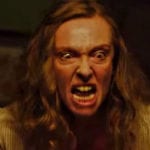 Mysteries
Mysteries  Mysteries
Mysteries  History
History 10 Surprising Stories About the Texas Rangers
 Humans
Humans 10 Philosophers Who Were Driven Mad by Their Own Theories
 Miscellaneous
Miscellaneous 10 Video-Game-Worthy Weapons and Armors from History
 Weird Stuff
Weird Stuff 10 Psychics Who Accurately Predicted Wartime Events
 The Arts
The Arts 10 Pieces of Art Inspired by a Broken Heart
 Health
Health 10 Science Fiction-Sounding New Medical Treatments
 History
History 10 Surprising Facts About the Father of Submarine Warfare
 Space
Space Ten Astonishing New Insights into Alien Worlds
 Weird Stuff
Weird Stuff 10 Bizarre Summer Solstice Rituals Still Practiced Today
 Mysteries
Mysteries Top 10 Haunting Facts About the Ghost Ship MV Alta
 History
History 10 Surprising Stories About the Texas Rangers
 Humans
Humans 10 Philosophers Who Were Driven Mad by Their Own Theories
Who's Behind Listverse?

Jamie Frater
Head Editor
Jamie founded Listverse due to an insatiable desire to share fascinating, obscure, and bizarre facts. He has been a guest speaker on numerous national radio and television stations and is a five time published author.
More About Us Miscellaneous
Miscellaneous 10 Video-Game-Worthy Weapons and Armors from History
 Weird Stuff
Weird Stuff 10 Psychics Who Accurately Predicted Wartime Events
 The Arts
The Arts 10 Pieces of Art Inspired by a Broken Heart
 Health
Health 10 Science Fiction-Sounding New Medical Treatments
 History
History 10 Surprising Facts About the Father of Submarine Warfare
 Space
Space Ten Astonishing New Insights into Alien Worlds
 Weird Stuff
Weird Stuff 10 Bizarre Summer Solstice Rituals Still Practiced Today
Top 10 Must-See Episodes of the Twilight Zone
This year (2009) celebrates the fiftieth anniversary of a classic television series: The Twilight Zone. Beginning in 1959 and running for five seasons, The Twilight Zone has definitely made its mark on our culture. Out of 156 fantastic episodes, I picked the top ten that, in my opinion, are must-see episodes.
Some may disagree with this episode being on the list. After all, it’s not well known and is rarely seen on television re-runs. However, “I Am The Night – Color Me Black” is a very powerful episode about a town that’s plunged into total blackness. The sun stops shining on this one town on the day of a hanging. The truth about why slowly comes out as a priest theorizes what the blackness means. The ending is subtle, creepy, and very bleak. While “I Am The Night – Color Me Black” is probably the least famous episode on this list, it comes highly recommended.
This episode is quite famous and features a young boy as an absolute monster. The town of Peaksville is in the fate of little Anthony Fremont. “It’s A Good Life” is based on a famous science-fiction short story by Jerome Bixby. The Twilight Zone does an admirable job of recreating the sense of helplessness that overcomes the residents of Peaksville as they embrace the dire circumstances that surrounds them. Like “I Am The Night – Color Me Black,” a sense of dread overpowers the story and leads to a bleak, unnerving conclusion. You just can’t help feeling a little on edge after watching this one.
Charles Beaumont’s vision of a future society (oddly enough, coined as the year “2000”) is thought provoking and absolutely chilling. Perhaps most frightening is how accurate Beaumont’s predictions are. The story is about a world in which plastic surgery and looking like everybody else is the true measure of “happiness.” You can’t help but wonder if Beaumont was psychic because so much rings true of today’s society – from the first name basis to the glass of instant smile (reminds me of some of the drugs out today). It’s a brilliant story and Marilyn’s last line is heart wrenching after witnessing all that she does to try and stay “ugly.”
The monster on the wing of the plane is a famous image from The Twilight Zone. If you haven’t seen this episode, you really owe it to yourself. Richard Matheson’s script is wonderful in the way it makes you question what’s real and what isn’t. A young William Shatner fills the role of a man on the verge of a mental break perfectly. While it may not have a big “twist” ending, the tension builds and builds to an explosive conclusion. It’ll make you look twice the next time you’re in the window seat of an airplane.
Here is a story about a man pushed to the breaking point – the stress of work and an unhappy marriage leads protagonist Gart Williams closer and closer to madness. Gart is clearly on the brink of a nervous breakdown and James Daly’s performance really sells the story and makes you feel for his character. It’s one of the more realistic scripts presented on The Twilight Zone and that’s what makes it so powerful. Every part of the “A Stop at Willoughby” feels genuine and the sense of desperation shines though. The ending is presented beautifully and you probably won’t see the twist coming.
This is probably the most famous episode on The Twilight Zone and it is for good reason. “Time Enough At Last” presents a story about the end of the world – and the one man who inhabits it. From the set pieces, to the performances, to the plot – everything about “Time Enough At Last” works. We can’t help but root for Henry Bemis (played wonderfully by Burgess Meredith) the whole way through. There’s a certain innocence and overall goodness about him that makes Bemis so likable. It’s this sympathy that makes the ending so tragic, so upsetting, and so “unfair.” Definitely see this one if you haven’t already.
What would happen if monsters landed in your town disguised as a normal family? This question echoes throughout the entire episode as suspicion mounts and the need for a scapegoat becomes more and more necessary. The residents of Maple Street become obsessed with finding out who the monster is among them after a mysterious comet flies over, shutting down all electrical power. As the viewer, you can’t help but try and out-guess the writer. At times you will go crazy trying to figure out who is (and who isn’t) the monster. “The Monsters are Due on Maple Street” is a wonderful social commentary about life in the 1950’s that still holds true today. The ending is perfect and shows the potential of human suspicion and hatred.
Here is an episode with almost no dialogue whatsoever. It’s about a woman living on an old farmhouse who is terrorized by tiny invaders from another planet. This episode, also written by Richard Matheson, is filled with tension and has one of the best twists. It’s amazing how you can turn off the volume and get just as much out of the episode as if you had the volume cranked up. “The Invaders” has a classic Twilight Zone feel to it – it’s creepy, suspenseful, and gripping. While some parts feel a little slow (after all, no one speaks until the last minute), there’s no denying that “The Invaders” is a must-see Twilight Zone episode.
“Walking Distance” is an all around beautiful episode of The Twilight Zone. I really considered putting it as number one, but it doesn’t exactly have that Twilight Zone feel to it. “Walking Distance” is similar to “A Stop at Willoughby” in its realism. The episode is about a middle-aged man who stumbles upon his childhood town exactly as it was when he was a kid. “Walking Distance” is a very nostalgic episode that makes you recall and appreciate your childhood. The acting, the music, the directing – everything in this episode is absolutely beautiful. The ending narration by Rod Serling is, in my opinion, the best of any narration on The Twilight Zone.
There is no denying that “The Eye of the Beholder” is the number one must-see episode of The Twilight Zone. It has everything that made the series great – a gripping story with a shocking twist, great acting, fine camera work, and a commentary on being human. “The Eye of the Beholder” is about a woman who is physically disfigured – and she wants nothing more than to have her physical deformities corrected. Slowly, the audience begins to realize that this hospital and world she’s living in is a totalitarian state, where being like everybody else is not only encouraged, but necessary. The ending is jaw dropping and leaves you with an insight into human nature. If you haven’t seen an episode of The Twilight Zone, this is the place to start.






![10 Episodes That Were Banned From Television [Videos—Seizure Warning] 10 Episodes That Were Banned From Television [Videos—Seizure Warning]](https://listverse.com/wp-content/uploads/2019/10/image-150x150.jpg)

